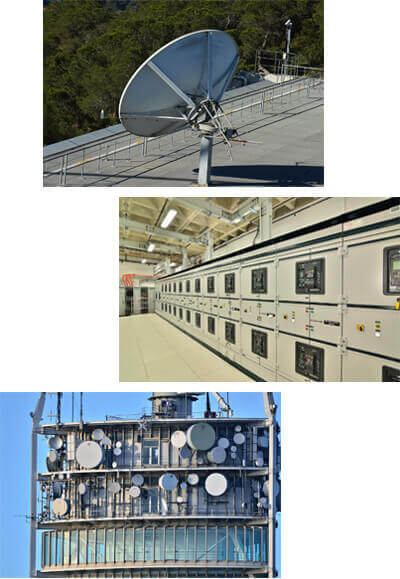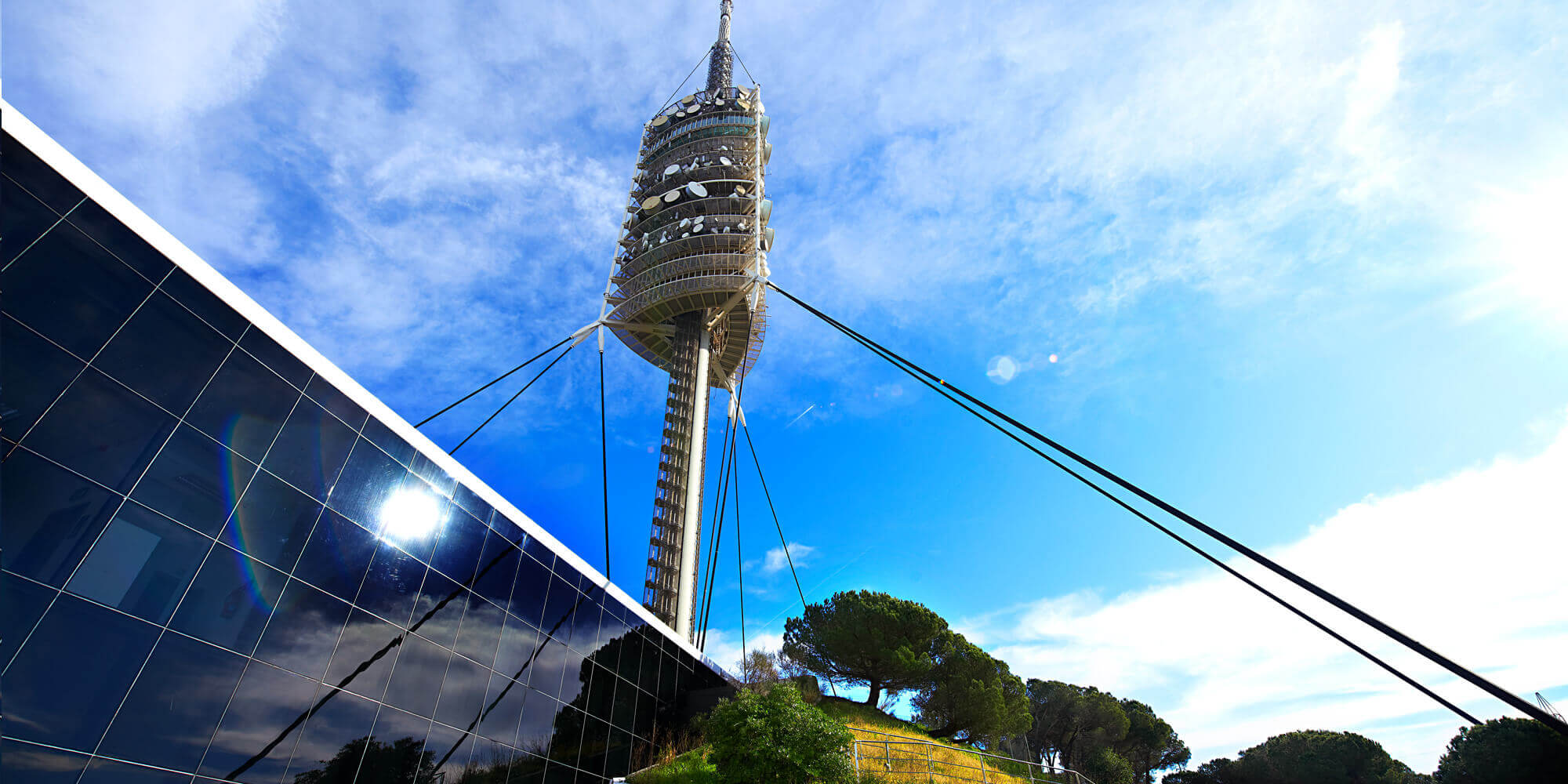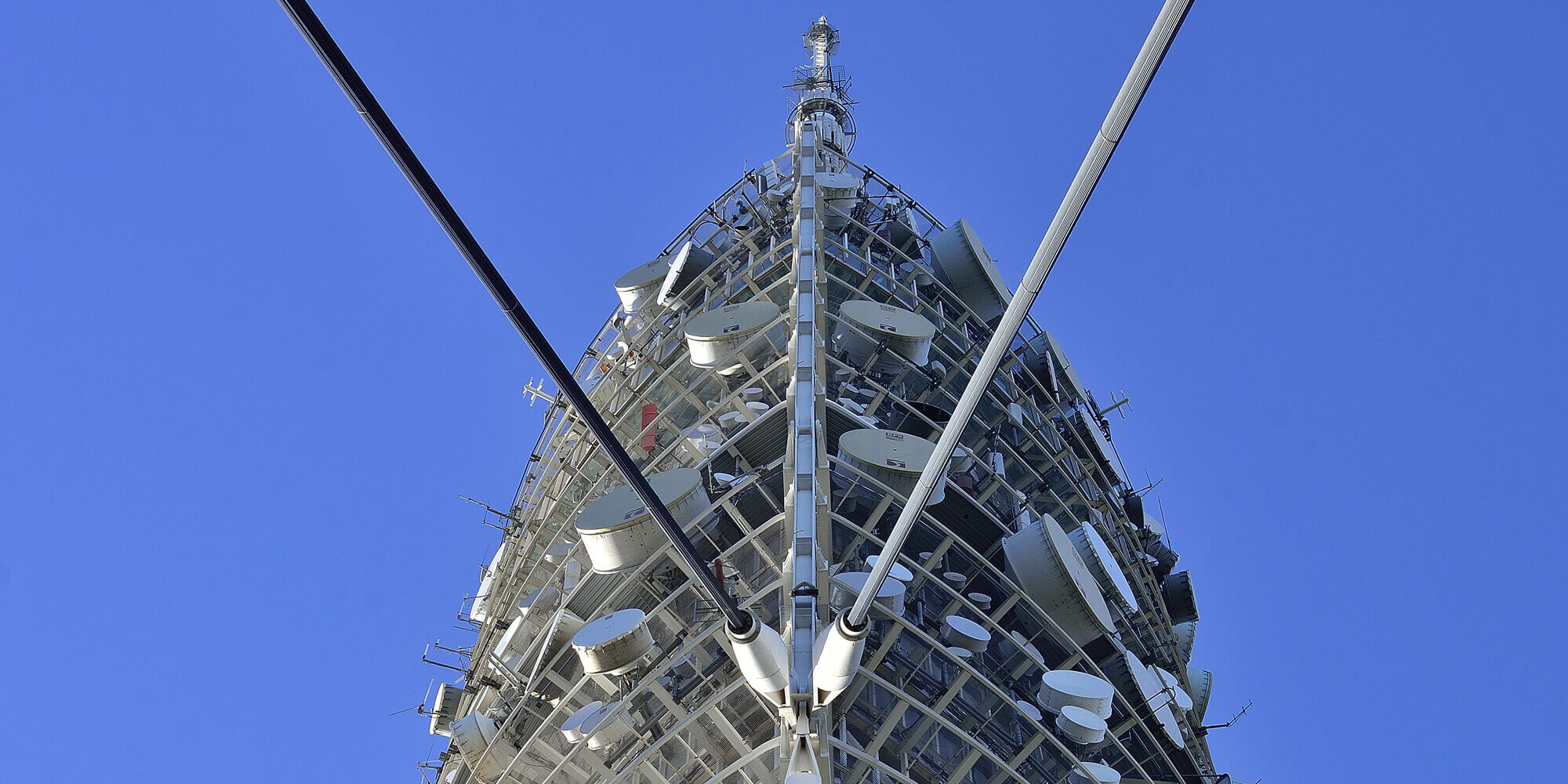Torre de Collserola, S.A. is a commercial company founded in 1987 to construct and operate the Torre de CollserolaTelecommunications Complex.
The Barcelona City Council awarded Torre de Collserola, S.A. the concession of the land rights ofTuró de la Vilana (Sierra de Collserola) for a period of 50 years. The Torre de Collserola telecommunications complex entered into service on June 27, 1992.
Torre de Collserola, S.A. was the project developer and is the current owner.
Its coreline of business is the leasing of space for telecommunications companies, offering infrastructure services to users who require the use of an elevated location for their telecommunications systems and for receiving and transmitting radio signals.
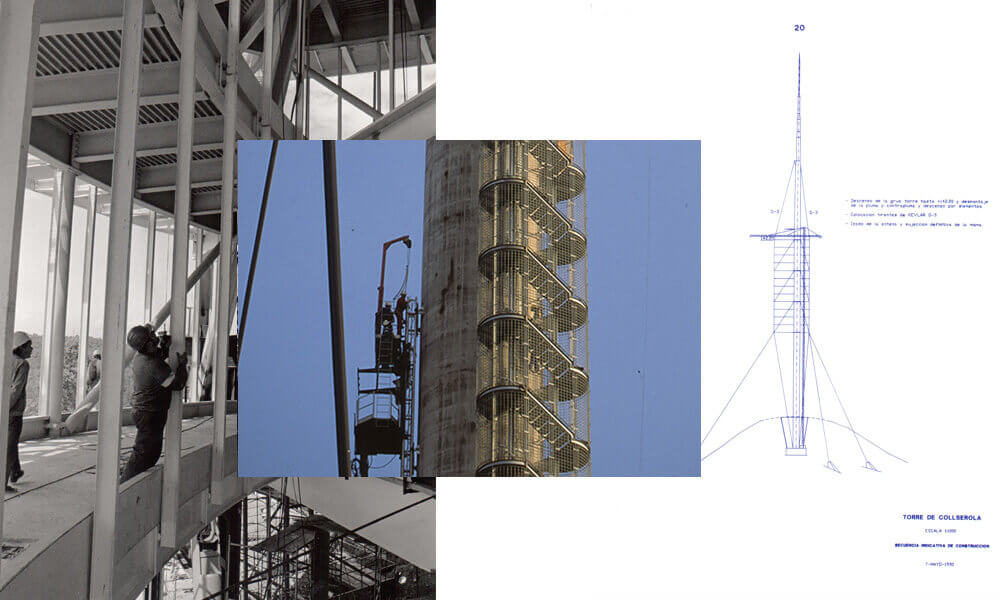
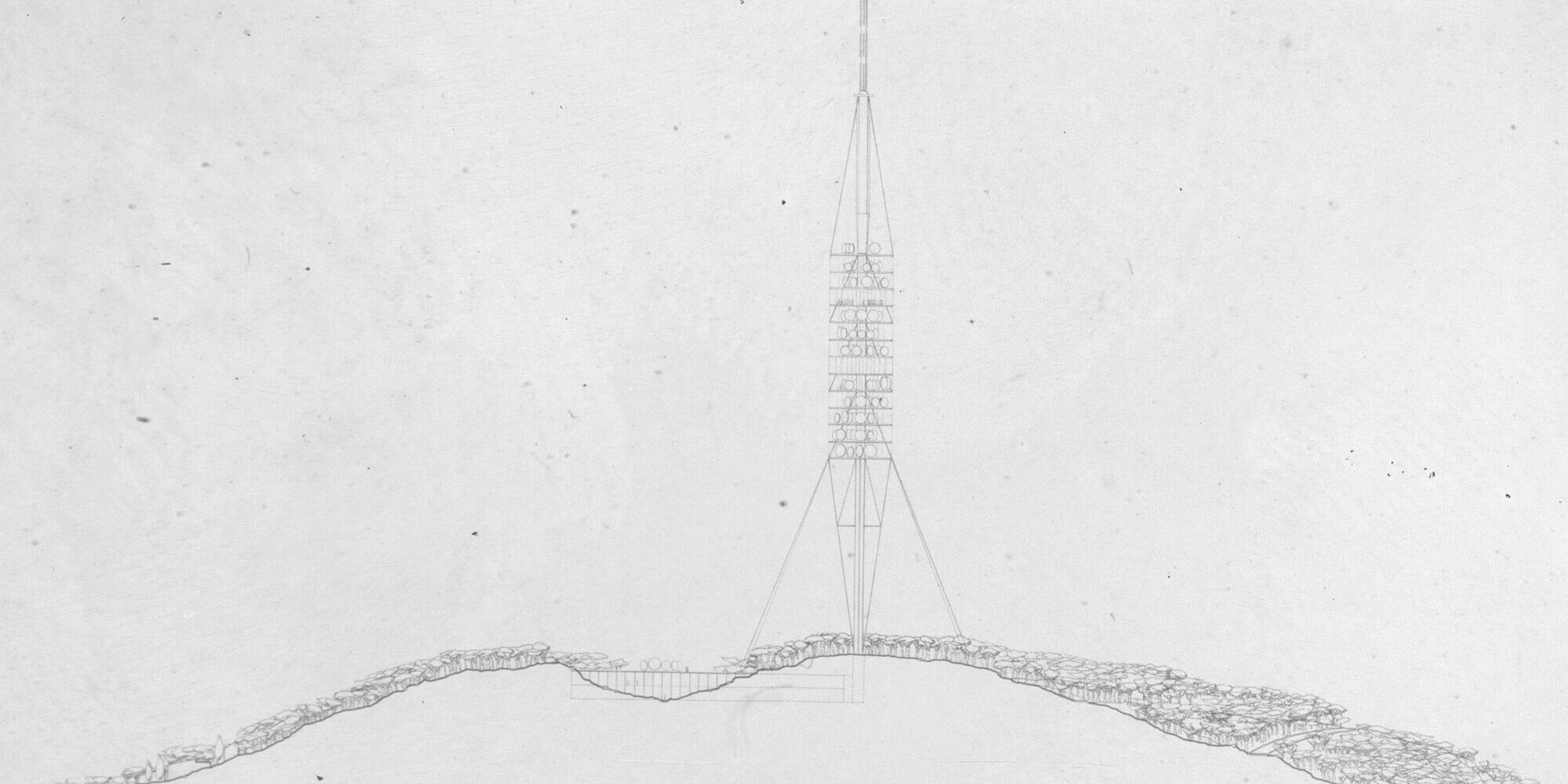
History of the Torre de Collserola Telecommunications Complex
Barcelona’s government, in anticipation of the communications requirements of the 1992 Olympic Games and with an aim of bringing together the telecommunication services scattered across the region, promoted the construction of a large telecommunications complex that could also serve as a new symbol for the city.
Since it was the local government who authorized a single communications tower on the Collserola mountain range, two major players (Telefónica and TVE) were brought in to develop a joint project. Together with the Barcelona City Council, these two companiesdefined the project’s basic parameters, which also included a public viewing platform as required by the local administration.
Once the preliminary plans were developed in November 1987, Torre de Collserola, S.A. was established and announced a design BIDDING PROCESS among internationally renowned designers in order to choose the best project to develop. Four first-rate projects with extremely diverse solutions –from more classic towers to structurally innovative proposals– were presented in March 1988.
The bid was finally awarded to the proposal by architect Norman Foster, which focused on a streamlined design, innovation, the adaption of the structure to the landscape and a minimal visual impact with acable-stayed tower featuring large overhanging platforms. Foster’s design incorporated an already advanced structural calculation as a result of his collaboration with the Ove Arup engineering firm.
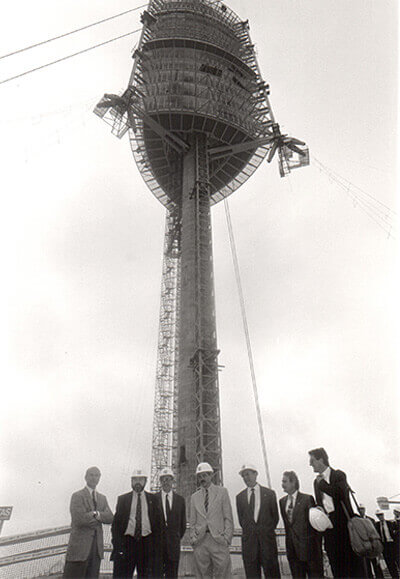
In light of the possibilities offered by the winning project, a new layout of the design criteria was drawn up and the company formed a Technical Commission composed of representatives from the partner companies, who periodically met with the members of the Design Team, which included the architectural and structural project managers (Foster and Arup).
The basic design that was presented for the required building license in February 1989 was already the result of a joint effortsby users, designers and structural professionals who, according to Norman Foster, were symbolically represented in the three radial arms that supported each platform.
Architect Norman Foster defined it as “A new symbol for the city, a tower that stands its ground yet adapts to each moment and changes with each new perspective”.
1987
1988
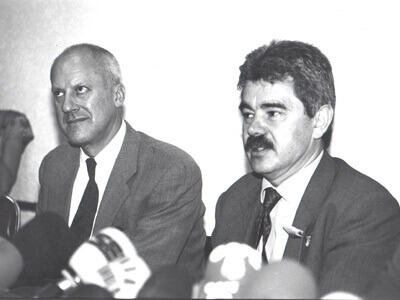
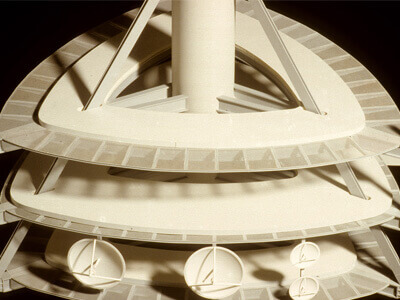
1989
1990
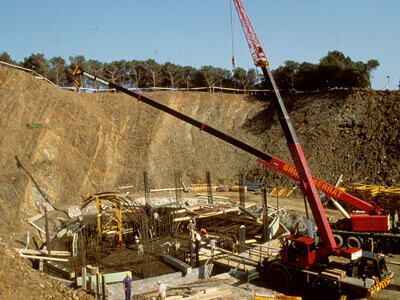

1991
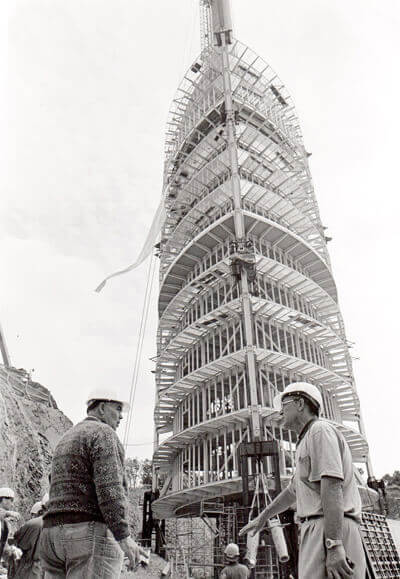

1992
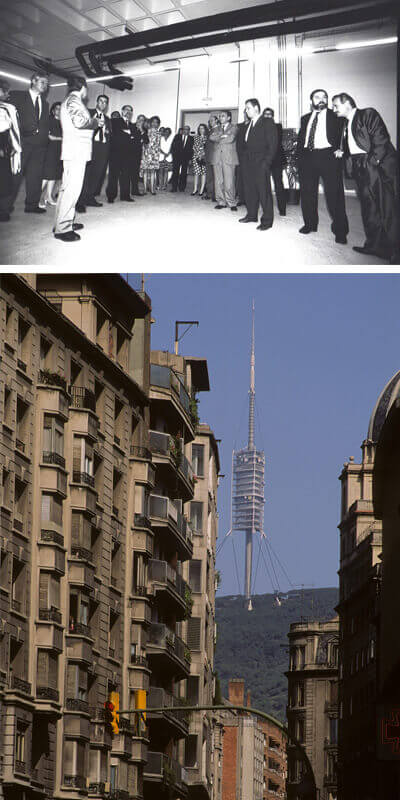
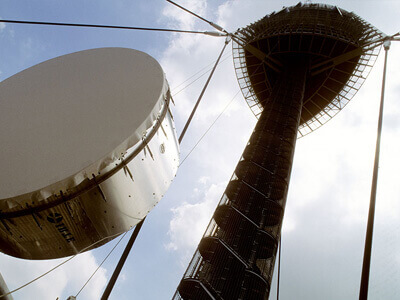
1993
1994
1997
2009
2010
